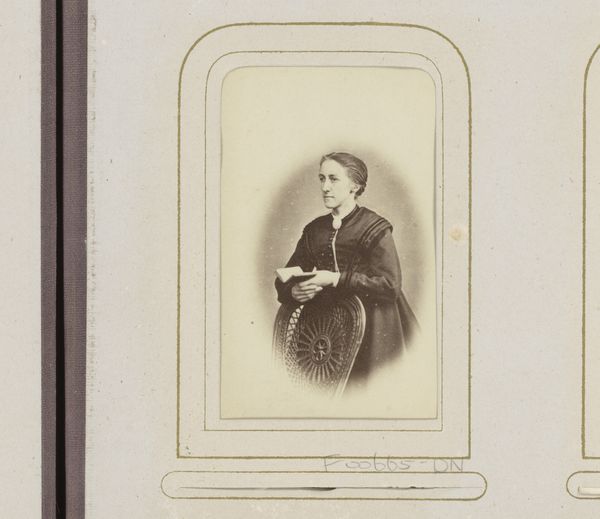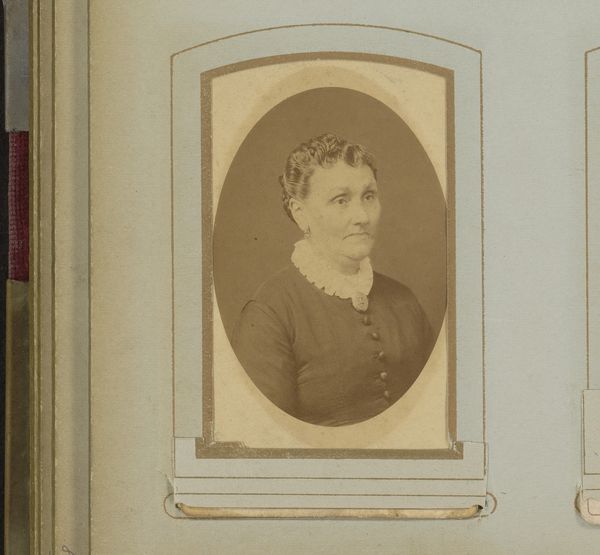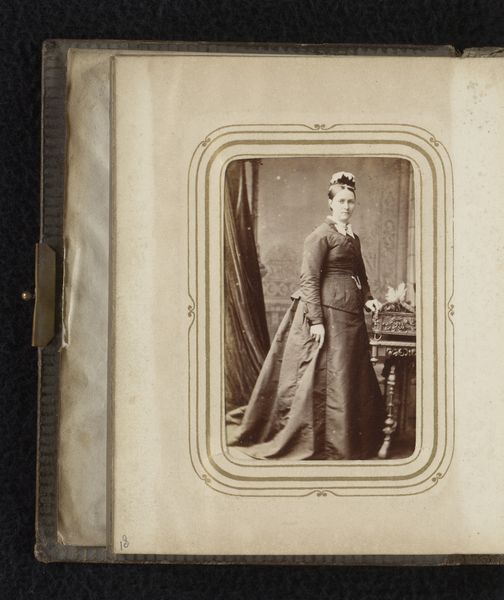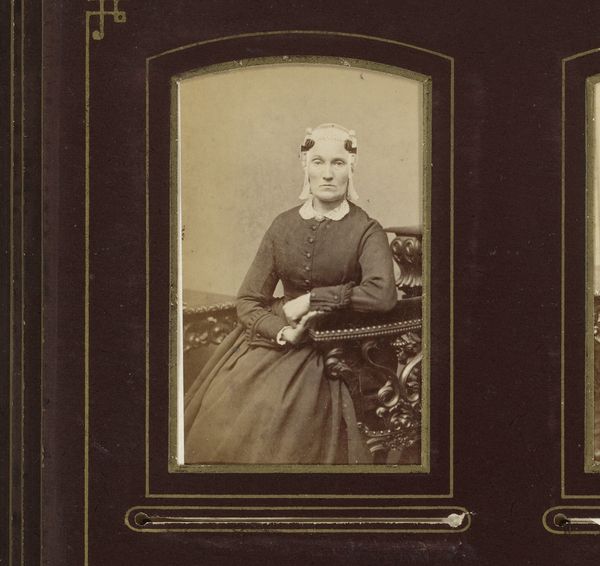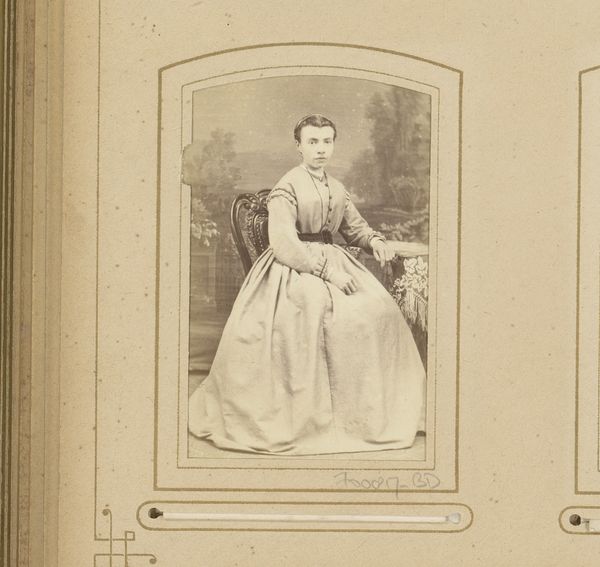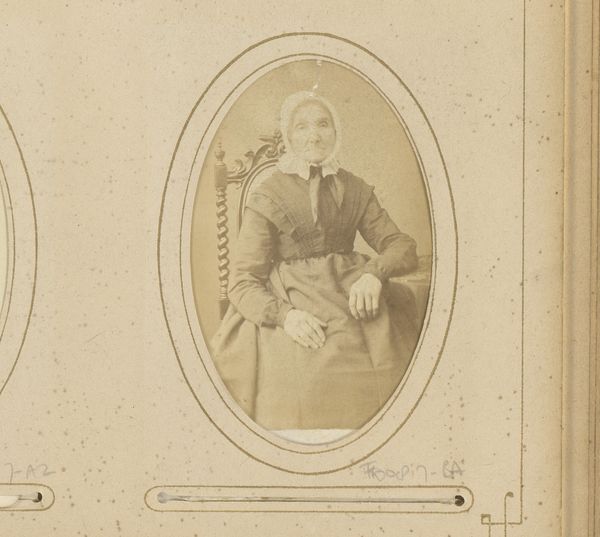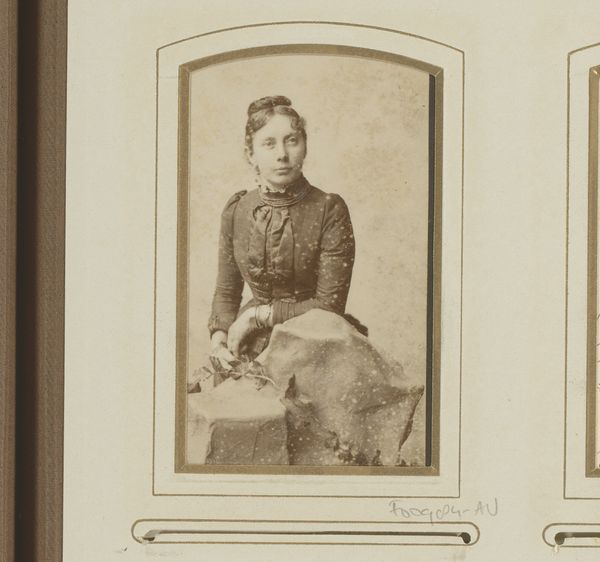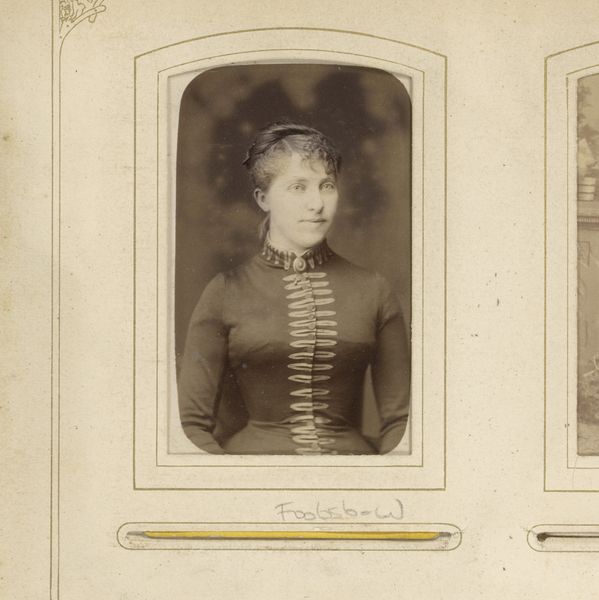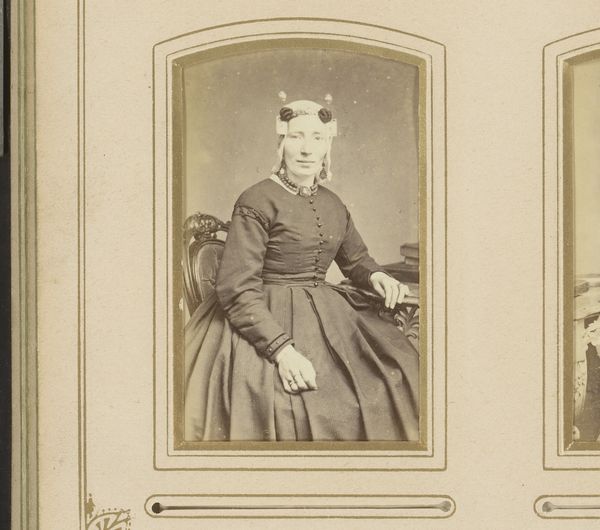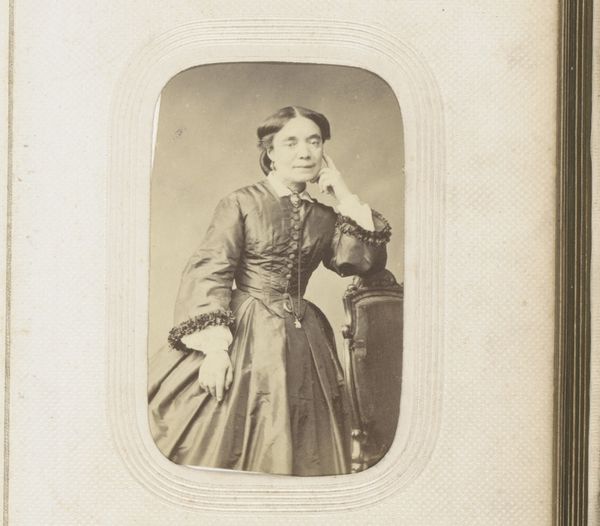
photography
#
photography
#
realism
Dimensions: height 82 mm, width 53 mm
Copyright: Rijks Museum: Open Domain
Curator: This is "Portret van een staande jonge vrouw," a photograph by Herman Salzwedel, created sometime between 1880 and 1905. It resides here at the Rijksmuseum. Editor: The photograph possesses a striking formality, yet the woman's expression hints at a hidden narrative. Her stance, almost posed, invites contemplation. What stories lie beneath the surface of this seemingly straightforward portrait? Curator: Consider the material realities. During this period, photography transitioned from an exclusive process to become more accessible. The sitter’s clothing, likely chosen with care, speaks of burgeoning consumer culture. The production of photographic paper and the printing process itself reflect the advancements of industrial technology during this era. Editor: The young woman's necklace, that pendant—a delicate circle—what might it signify? Beyond personal adornment, does it reference a familial connection, a particular affiliation, or even a societal role? Curator: I wonder about the labor involved, too—both for the photographer and the sitter. Posing for a portrait like this would have demanded considerable patience and stillness. Salzwedel likely utilized a studio setting with controlled lighting to capture this image with the desired clarity and tonality. Editor: And what of her attire, specifically? A darker, seemingly more durable fabric versus the whites—almost like social classes? Curator: Precisely! The contrasting textiles may well have indicated different tiers within the rising merchant or upper classes of the time. Such deliberate arrangements hint at an intended social stratification, which also played out across consumption—and ultimately the marketplace of photographic portraits like this. Editor: These portraits carry a strange sense of timelessness, and I think this comes from their connection to symbolism that transcends generations. A lot is felt with small pieces, like this circle she wears or even how that small wicker side table suggests comfort. Curator: Well said! That seemingly modest object speaks volumes regarding both the intended presentation and how individuals curated objects as signifiers of social position within their domestic space during a fascinating stage of economic transition. Thanks for that perspective. Editor: Thank you; now seeing this work makes me wonder what portraits in the future will look like, considering that one can have their portrait at any moment.
Comments
No comments
Be the first to comment and join the conversation on the ultimate creative platform.
